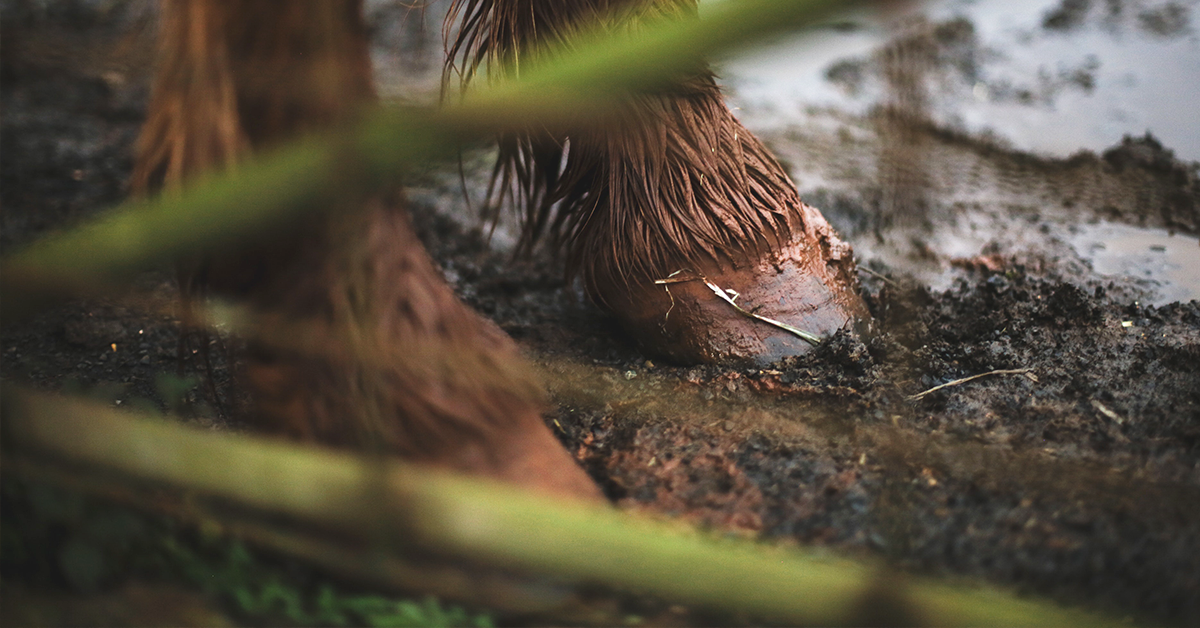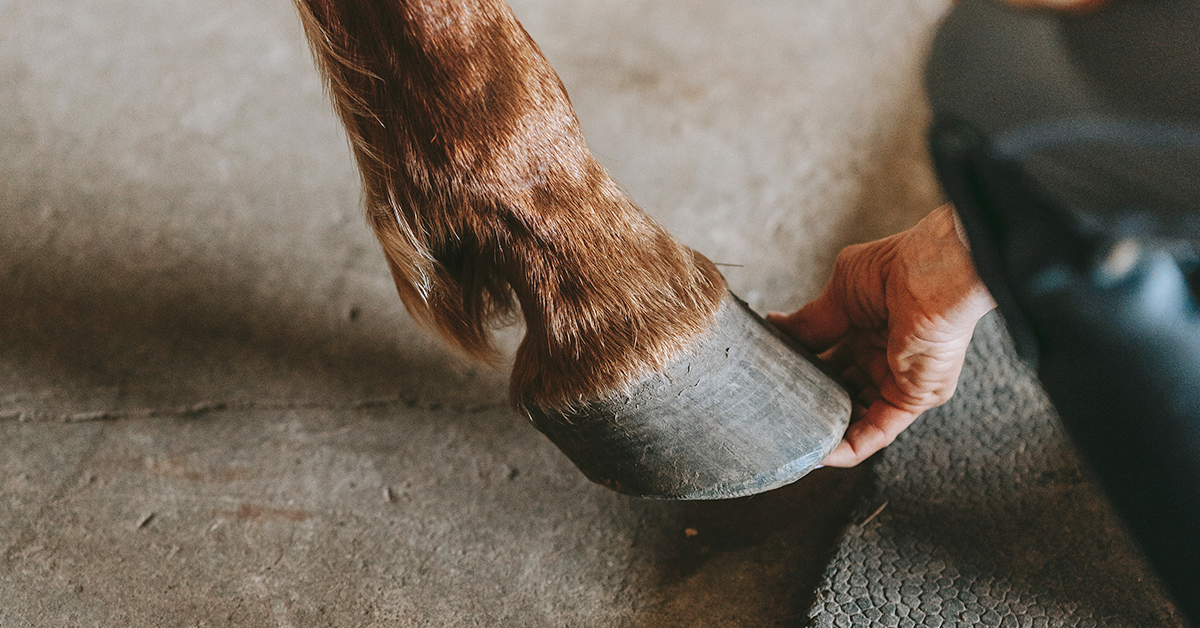If you’ve had horses for very long at all, then chances are, you’ve dealt with a hoof abscess or two. They’re not much fun for us and they’re definitely not fun for the horse. But the good news is that hoof abscesses are usually short-lived and your horse will often recover just fine.
What Causes a Hoof Abscess?
Hoof abscesses occur when bacteria get trapped between the sensitive laminae and the hoof wall or sole. An infection can then build up and create pressure and cause severe pain in the hoof.
Hoof abscesses can be the result of a nail or some other sharp object piercing the hoof, or they may also occur if bacteria penetrate gaps in the white line. This can happen when the hoof is softened by periods of wet weather. However, overgrown hooves with stretched white lines are also more prone to abscessing. Likewise, a diet high in NSCs (sugars in grasses and feeds) can also cause a stretched white line and create an increased risk of abscesses. Deep bruising of the sole or hoof wall can be another cause.

Diagnosing a Hoof Abscess
Hoof abscesses are extremely painful and the horse will likely experience sudden, severe lameness. Your veterinarian will use hoof testers to try and find the location of the abscess. They may also want to take radiographs to look for the abscess and also rule out other causes of lameness.
Treating a Hoof Abscess
Often, the veterinarian can create a small hole in the white line, sole, or hoof wall so the abscess can drain. In other cases, they may not be able to locate the abscess, or it may be too deep to attempt to drain. In this case, the abscess will have to rupture on its own.
Most abscesses that rupture on their own tend to drain at the coronary band or heel bulbs. However, a small percentage may spread to deeper hoof structures. This is more typical of chronic abscesses that aren’t treated in a timely manner. But if deeper hoof structures are affected, treatment will take longer and can be costly. It may also lead to permanent lameness.
Drained or ruptured abscesses will need to be kept clean. A waterproof covering such as a diaper or hoof boot can then be used to keep the foot clean and dry As the abscess is healing, keep the horse in a clean, dry area and change the bandage daily.
Fortunately, once hoof abscesses are drained, many horses can return to work in less than a week.

Love this blog post? We think you may enjoy Nutrition for Hoof Health by Casie Bazay.



